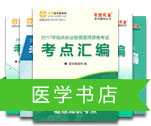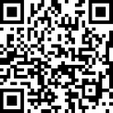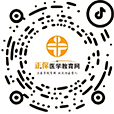医学英语是很多医疗工作者的难题,但不管怎样,学习是不允许畏难的。下面就随医学教育网小编一起来看看今天这篇分享:Anatomy and Circulation of the Heart文本翻译,相信会有所帮助!
Your heart is an amazing organ. It continuously pumps oxygen and nutrient-rich blood throughout your body to sustain life. This fist-sized powerhouse beats (expands and contracts) 100,000 times per day, pumping five or six quarts of blood each minute, or about 2,000 gallons per day.
心脏是令人惊奇的器官,它不断地泵出富含氧气和营养物质的血液到达人体各部分以维持生命。心脏有拳头大小,通过舒张收缩而跳动,每天跳动10万次,每分钟泵出5-6夸脱血液,大约一天2千加仑。
How Does Blood Travel Through the Heart?
As the heart beats, it pumps blood through a system of blood vessels, called the circulatory system. The vessels are elastic tubes that carry blood to every part of the body.
Blood is essential. In addition to carrying fresh oxygen from the lungs and nutrients to your body's tissues, it also takes the body's waste products, including carbon dioxide, away from the tissues. This is necessary to sustain life and promote the health of all the body's tissues.
There are three main types of blood vessels:
Arteries. They begin with the aorta, the large artery leaving the heart. Arteries carry oxygen-rich blood away from the heart to all of the body's tissues. They branch several times, becoming smaller and smaller as they carry blood farther from the heart.
Capillaries. These are small, thin blood vessels that connect the arteries and the veins. Their thin walls allow oxygen, nutrients, carbon dioxide, and other waste products to pass to and from our organ's cells.
Veins. These are blood vessels that take blood back to the heart; this blood lacks oxygen (oxygen-poor) and is rich in waste products that are to be excreted or removed from the body. Veins become larger and larger as they get closer to the heart. The superior vena cava is the large vein that brings blood from the head and arms to the heart, and the inferior vena cava brings blood from the abdomen and legs into the heart.
This vast system of blood vessels -- arteries, veins, and capillaries -- is over 60,000 miles long. That's long enough to go around the world more than twice!
Blood flows continuously through your body's blood vessels. Your heart is the pump that makes it all possible.
血液是如何流经心脏的呢?
心脏通过跳动将血液泵入血管,心脏和血管统称为循环系统。运输血液到达机体每个部分的血管均具有弹性。
血液是人体必需的。除了将来自肺部的新鲜氧气、营养物质运输至人体的各个组织,又将各组织代谢的废物如二氧化碳等运输至排泄器官,这个过程对维持基本的生命活动以及促进机体健康是必要的。
血管主要分为三种类型:
动脉。起于与心脏相连的大动脉——主动脉,运输富含氧气的血液离开心脏至机体的各个组织。随着血液的运输,动脉逐级分支,越分越细。
毛细血管。连接动静脉,管壁薄,管腔小。毛细血管和各器官组织通过血管壁进行氧气、营养物质、二氧化碳和其他代谢产物的物质交换。
静脉。将含有代谢产物和含氧量少的血液运回心脏,进而排出体外。静脉离心脏越近,管腔越粗。血液通过上腔静脉从头、臂部返回到心脏以及通过下腔静脉将血液从腹部、腿部返回至心脏。
血管系统包括动脉、静脉和毛细血管,长达6万多英里,足以环绕地球两圈。心脏不断泵血,使血流持续经血管流至机体各部分。
Where Is Your Heart and What Does It Look Like?
The heart is located under the rib cage, to the left of your breastbone (sternum) and between your lungs.
Looking at the outside of the heart, you can see that the heart is made of muscle. The strong muscular walls contract (squeeze), pumping blood to the arteries. The major blood vessels connected to your heart are the aorta, the superior vena cava, the inferior vena cava, the pulmonary artery (which takes oxygen-poor blood from the heart to the lungs where it is oxygenated), the pulmonary veins (which bring oxygen-rich blood from the lungs to the heart), and the coronary arteries (which supply blood to the heart muscle).
On the inside, the heart is a four-chambered, hollow organ. It is divided into the left and right side by a wall called the septum. The right and left sides of the heart are further divided into two top chambers called the atria, which receive blood from the veins, and two bottom chambers called ventricles, which pump blood into the arteries.
The atria and ventricles work together, contracting and relaxing to pump blood out of the heart. As blood leaves each chamber of the heart, it passes through a valve. There are four heart valves within the heart:
Mitral valve
Tricuspid valve
Aortic valve
Pulmonic valve (also called pulmonary valve)
The tricuspid and mitral valves lie between the atria and ventricles. The aortic and pulmonic valves lie between the ventricles and the major blood vessels leaving the heart.
The heart valves work the same way as one-way valves in the plumbing of your home. They prevent blood from flowing in the wrong direction.
Each valve has a set of flaps, called leaflets or cusps. The mitral valve has two leaflets; the others have three. The leaflets are attached to and supported by a ring of tough, fibrous tissue called the annulus. The annulus helps to maintain the proper shape of the valve.
The leaflets of the mitral and tricuspid valves are also supported by tough, fibrous strings called chordae tendineae. These are similar to the strings supporting a parachute. They extend from the valve leaflets to small muscles, called papillary muscles, which are part of the inside walls of the ventricles.
心脏的位置和外形
心脏位于肋骨下,胸骨左侧,两肺之间。
从外形上,心脏由心肌组成,心肌强有力收缩泵出血液至动脉。与心脏连接的血管主要是主动脉、上腔静脉、下腔静脉、肺动脉、肺静脉、冠状动脉。含氧量少的血液由心脏经肺动脉运输至肺,而肺静脉将富含氧气的血液由肺运至心脏。冠状动脉为心肌提供血液。
观其内部,心脏是由四个空腔构成的器官,由间隔分为左右两部分,心脏的左右两部分又各分为两个腔,即心房、心室。心房位于上面,接收来自静脉的血液,心室位于下部,将血液泵出至动脉。
心房和心室通过收缩舒张协同工作共同泵出血液。血液离开心腔时会通过瓣膜。心脏有四个心瓣膜:二尖瓣、三尖瓣、动脉瓣、肺动脉瓣。
三尖瓣、二尖瓣位于房室之间,主动脉瓣、肺动脉瓣位于心室和运输血液离开心脏的主要血管之间。
心瓣膜保证血液沿一个方向流动,从而避免血液反流。
每个瓣膜都有一套瓣叶。二尖瓣有两个瓣叶,其余瓣有三个瓣叶。这些瓣叶都附着在硬的纤维组织上,即瓣环,以维持瓣膜的形状。
二尖瓣、三尖瓣的瓣叶也附着在硬的纤维索上,即腱索。这就像降落伞由绳索支持。腱索连接瓣叶尖和心室内壁上的乳头肌。
How Does Blood Flow Through the Heart?
The right and left sides of the heart work together. The pattern described below is repeated over and over, causing blood to flow continuously to the heart, lungs, and body.
Right side
Blood enters the heart through two large veins, the inferior and superior vena cava, emptying oxygen-poor blood from the body into the right atrium.
As the atrium contracts, blood flows from your right atrium into your right ventricle through the open tricuspid valve.
When the ventricle is full, the tricuspid valve shuts. This prevents blood from flowing backward into the atria while the ventricle contracts.
As the ventricle contracts, blood leaves the heart through the pulmonic valve, into the pulmonary artery and to the lungs where it is oxygenated.
Left side
The pulmonary vein empties oxygen-rich blood from the lungs into the left atrium.
As the atrium contracts, blood flows from your left atrium into your left ventricle through the open mitral valve.
When the ventricle is full, the mitral valve shuts. This prevents blood from flowing backward into the atrium while the ventricle contracts.
As the ventricle contracts, blood leaves the heart through the aortic valve, into the aorta and to the body.
血液如何流经心脏?
心脏左右两部分共同工作,以一种方式一遍遍重复,使血液流至肺、心脏和机体其余各部分。
心脏的右边部分
血液通过两个大静脉,即上下腔静脉流至血液,将乏氧血液从机体各部分运至右心房。
心房收缩,三尖瓣处于开放状态,血液从右心房流到右心室。
心室血液充盈完毕,三尖瓣关闭,阻止右心室收缩时右心室的血液反流至右心房。
右心室收缩,肺动脉瓣处于开放状态,血液经肺动脉从右心室到达富含氧的肺。
左边部分
肺静脉将富含氧气的血液从肺运至左心房。
左心房收缩,二尖瓣处于开放状态,血液从左心房流至左心室。
左心室充盈完毕,二尖瓣关闭。阻止左心室收缩时,左心室的血液反流至左心房。
左心室收缩,主动脉瓣处于开放状态,血液从左心室流至主动脉再至机体各器官。
How Does Blood Flow Through Your Lungs?
Once blood travels through the pulmonic valve, it enters your lungs. This is called the pulmonary circulation. From your pulmonic valve, blood travels to the pulmonary artery to tiny capillary vessels in the lungs.
Here, oxygen travels from the tiny air sacs in the lungs, through the walls of the capillaries, into the blood. At the same time, carbon dioxide, a waste product of metabolism, passes from the blood into the air sacs. Carbon dioxide leaves the body when you exhale. Once the blood is purified and oxygenated, it travels back to the left atrium through the pulmonary veins.
血液怎么流经肺呢?
肺循环的过程是血液通过肺动脉瓣,进入肺动脉,再到肺毛细血管,氧气通过肺毛细血管壁从肺泡进入血液,同时,二氧化碳、代谢产物从血液进入到肺泡。二氧化碳随着呼气离开体内。来自肺动脉的血液经净化和氧化后,通过肺静脉流至左心房。
What Are the Coronary Arteries?
Like all organs, your heart is made of tissue that requires a supply of oxygen and nutrients. Although its chambers are full of blood, the heart receives no nourishment from this blood. The heart receives its own supply of blood from a network of arteries, called the coronary arteries.
Two major coronary arteries branch off from the aorta near the point where the aorta and the left ventricle meet:
Right coronary artery supplies the right atrium and right ventricle with blood. It usually branches into the posterior descending artery, which supplies the bottom portion of the left ventricle and back of the septum with blood.
Left main coronary artery branches into the circumflex artery and the left anterior descending artery. The circumflex artery supplies blood to the left atrium, side, and back of the left ventricle, and the left anterior descending artery supplies the front and bottom of the left ventricle and the front of the septum with blood.
These arteries and their branches supply all parts of the heart muscle with blood.
When the coronary arteries narrow to the point that blood flow to the heart muscle is limited (coronary artery disease), a network of tiny blood vessels in the heart that aren't usually open called collateral vessels may enlarge and become active. This allows blood to flow around the blocked artery to the heart muscle, protecting the heart tissue from injury.
什么是冠状动脉?
心脏和其他器官一样,需要氧气和营养物质的供给。即使心腔充满血液,心脏也没有从中去获取营养,而是通过网状的动脉即冠状动脉获取。
靠近主动脉和左心室交界处的主动脉窦发出左右冠状动脉:
右冠状动脉为右心房、右心室提供血液。它通常发出冠状动脉后降支供应左心室的底部和室间隔的后部。
左冠状动脉主干发出旋支和左前降支冠状动脉。旋支供应左心房、左心室的外缘和背部。左前降支供应左心室的前部和底部、室间隔的前部。
这些动脉及分支为心肌提供血液。当冠状动脉狭窄到一定程度,提供给心肌的血流被限制(冠心病),不经常开放的微小网状血管,即侧支血管,此时可能会扩张,变得活跃,在被堵塞的血管旁建立有效的循环,避免心肌损伤。
How Does the Heart Beat?
The atria and ventricles work together, alternately contracting and relaxing to make the heart beat and pump blood. The electrical system of your heart is the power source that makes this possible.
Your heartbeat is triggered by electrical impulses that travel down a special pathway through your heart.
The impulse starts in a small bundle of specialized cells called the SA node (sinoatrial node), located in the right atrium. This node is known as the heart's natural pacemaker. The electrical activity spreads through the walls of the atria and causes them to contract.
A cluster of cells in the center of the heart between the atria and ventricles, the AV node (atrioventricular node) is like a gate that slows the electrical signal before it enters the ventricles. This delay gives the atria time to contract before the ventricles do.
The His-Purkinje network is a pathway of fibers that sends the impulse to the muscular walls of the ventricles, causing them to contract.
At rest, a normal heart beats around 50 to 99 times a minute. Exercise, emotions, fever, and some medications can cause your heart to beat faster, sometimes to well over 100 beats per minute.
心脏如何跳动的呢?
心跳由电冲动沿着心脏特殊路径传导而产生。
心房、心室通过电活动产生收缩、舒张进而使心脏跳动和泵血。
电冲动起自位于右心房的窦房结(心脏的起搏器),沿着心房壁传导,引起心房收缩。
房室结,位于心脏中心,心房、心室之间的一群细胞,使电信号进入心室之前传导速度减慢,保证心房收缩后再开始心室收缩。
希氏束将电冲动传至心室引起心室收缩。
安静时,正常心跳50-99次/分。在运动、情绪波动、发热和服用一些药物时可引起心跳加快,甚至达到100次/分以上。
以上就是我为大家整理的Anatomy and Circulation of the Heart文本翻译,还请大家多多关注医学教育网,我们会随时更新更多更好的有关医学知识、医疗招聘及考试辅导等相关信息。敬请期待!










 扫一扫立即下载
扫一扫立即下载


